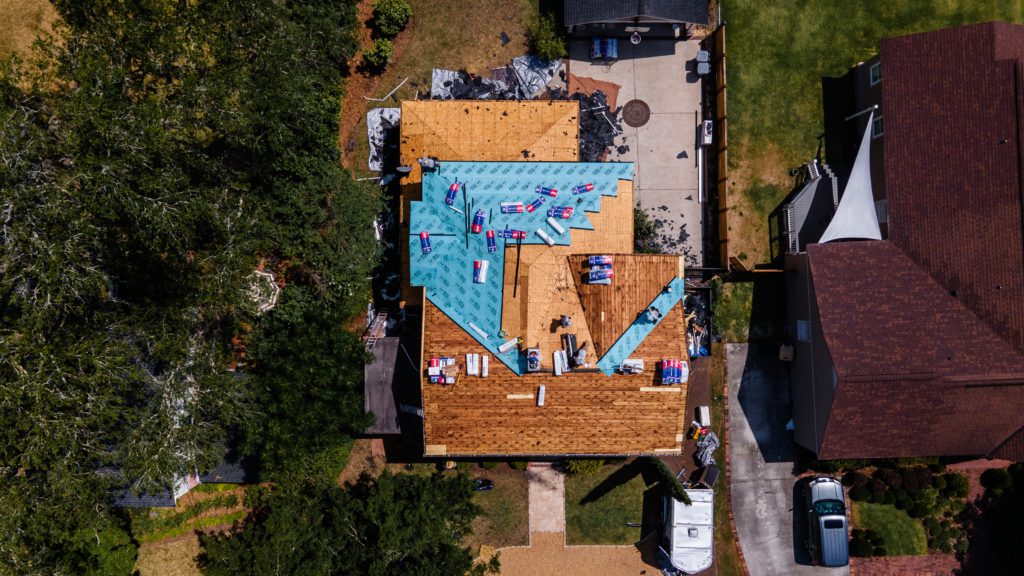Roofs are built to be durable and withstand harsh weather elements. However, your roof can still sustain significant damage after a storm. But, how exactly does storm damage affect your roof? Below we look at various storm elements and how they cause roof damage.
Lightning Strikes
Lightning strikes are more common in areas that are prone to hurricanes. Though it’s rare for a lightning strike to inflict damage on your roof, it can still happen. When it happens, a lightning strike has the potential to cause significant roof damage.
It can singe or burn the roofing material. Given the right conditions, your roof might even catch fire, though this is even rarer than lightning striking your roof in the first place. The worst damage happens when the lightning burns a big hole in your roof. This leaves your home vulnerable to water damage, which can be costly.
Hail
Hail is bad news for your roof. This weather phenomenon occurs when a storm updraft lifts water droplets into freezing areas of the atmosphere. The hailstones continue growing as they bump into more water droplets which freeze onto the surface.
When identifying hail damage, check for ugly dents or pockmarks on your roof — the bigger the hailstones, the more significant the damage. What’s more, if the hailstones hit your roof with enough force, they can cause cracks and holes across the entire surface of your roof.
Hail can also dislodge shingles, making it easier for strong winds to blow them away. This is how you end up with missing shingles. In the worst-case scenario, the roof will need replacement to prevent water intrusion after a hailstorm.
High Winds
Strong winds are powerful enough to blow away loose shingles, so missing shingles are one of the most common signs of storm damage. High winds can also cause shingles to curl around the edges or crack, making them ineffective at keeping water out.
Even the shingles that appear intact may now be loose, and chances are they are no longer airtight if the sealant between shingle layers breaks. Therefore, water can seep under the roof and cause hidden damage.
Strong winds can also damage your chimney flashing or easily lift it away if the wind speed is exceptionally high. In addition, severe high winds have been known to rip off gutters, roof decks, or the entire roof.
Heavy Rains
When the rainy season rolls around, you can trust your roof to protect against excessive moisture. However, heavy rains can sometimes take a toll on your roof, especially if the roof is not regularly maintained. Wind-driven rain can hit your roof at just the right angle to damage shingles and cause leakage.
Frequent heavy rains also accelerate the wear and tear of roofing materials, resulting in weak areas that become entry points for water damage. Roofs with slow slopes can also accumulate a lot of standing water that eventually seeps into your home and cause wood rot and significant water damage.
Flying Debris
Heavy winds tend to send things flying, so your roof can sustain damage from debris impact during a storm. Debris can be broken tree limbs, masonry bits, antennae, or small rocks that become high-speed projectiles capable of perforating your roof or damaging tiles and shingles.
Fallen large tree branches can cause the most damage when they hit your roof, as they puncture big holes in your roof that are expensive to fix.
Receive a Free Roof Inspection
Dealing with storm damage can be tough, but if you spot signs of roof damage, it’s crucial to act quickly before the damage spreads to the inside of your home. At HW roofing, we provide free inspections and high-quality roofing work for residents of St. Augustine and Jacksonville, FL. Contact us to schedule a free roof inspection today and get an expert assessment and recommendation.


